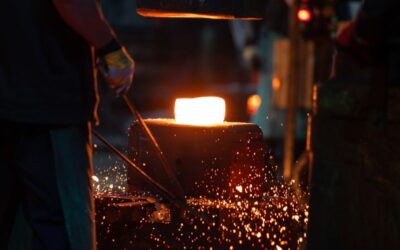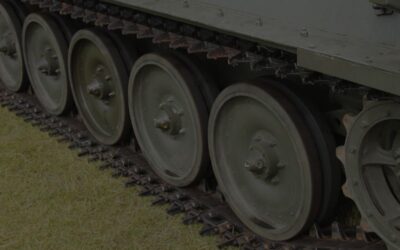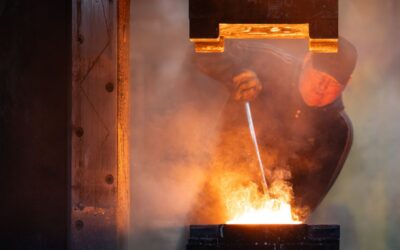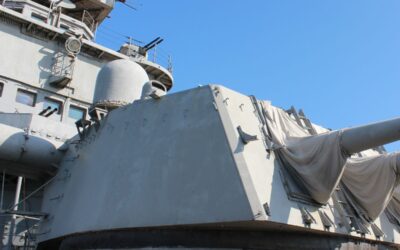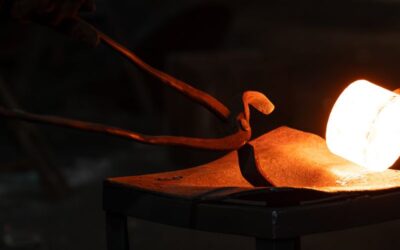What is the difference between a casting and a forging?
Forging creates metal products with generally a higher strength that is typically tougher than metal processed castings. Metal forgings are less likely to shatter at contact with other objects.
The increased strength is a consequence of how the metal is forced into a new shape, by pressing or hammering, during the forging process. As opposed to other methods of fabrication, the metals grain is stretched in this process, aligning in one direction instead of randomly. By the end of the forging process the resulting metal is stronger than it would have been had it been cast.
What is Upset Forging?
During upset forging a heading tool or ram is positioned perpendicular to the cross sectioned end face of a rod or bar gripped in a die. On application of pressure, the length of the rod is reduced and the diameter is increased (upset). This manufacturing process is used extensively in the production of fasteners to form bolt heads, screw heads etc.
Horizontal forging machines increase the cross-sectional area of a portion of the bar. Forgings are produced while still attached to the ends of the bar stock. The length of the bar to be headed or upset is heated independently of the machine. The bar is gripped and the moving die forges it to shape.
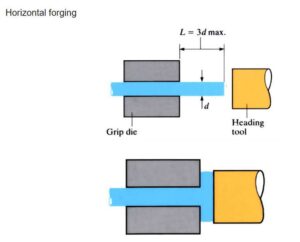
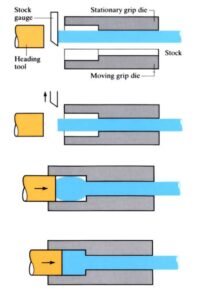
What is Drop Hammer Forging?
Drop forging – open die forging.
Drop forging is a process that uses a pair of impression dies and a heavy hammer to form and compress metal bars or billets into complex shapes. The impression or die cavity is the desired shape of the final forging. The equipment used in the drop forging process is known as a power or drop hammer.
The drop forging process allows for the manufacture of durable and strong components, optimising the structural strength of the metal. Through drop forging, the granular structure is compressed and aligned with the shape of the component being formed. Drop forging reduced the possibility of structural defects.
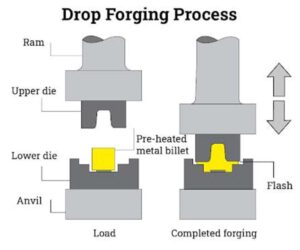
What are the benefits of forging?
The advantages of forging:
- Parts manufactured by forgings are stronger than other processes
- It offers high ductility
- It is more reliable and less costly than other processes
- It offers a better response to heat treatment
- It offers more consistent and better metallurgical properties
- It refines the structure of metal
- It offers a broad size range of products
- It requires fewer secondary operations
- It has great design flexibility
What materials are suitable for forging?
Typical metals used in the forging process include carbon, alloy steels, stainless steel and copper alloys.
Some common metals used in forging are:
- Alloy Steel
- Carbon Steel
- Microalloy Steel
- Stainless Steel
- Titanium
What is material grain flow?
Grain flow is a directional orientation of metal grains and any inclusions that have been deformed by forging. Individual grains are elongated in the direction of the metal flow or plastic deformation.
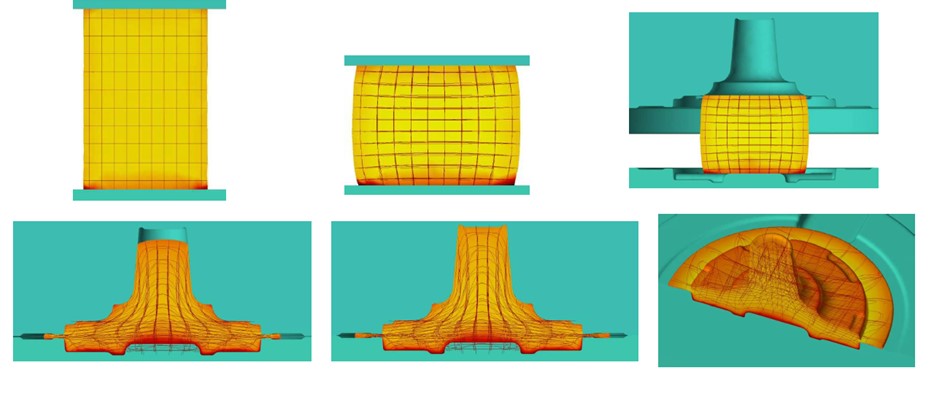
What types of components can be forged?
Forged components are commonly found at points of shock and stress such as wheel spindles, axle beams and shafts, torsion bars, ball studs, idler arms, pitman arms and steering arms.
Common applications of forged components include:
- Automotive and truck
- Agricultural machinery and equipment
- Valves, fittings, oil field applications
- Hand tools and hardware
- Off highway equipment
- General industrial equipment
- Ordnance/ship building
- Aerospace
This was my first time using Brockhouse, the service they provided was very friendly, efficient and easy.
LATEST NEWS.
The Warship Deal and Beyond Why Forgings Are Critical to UK Defence Strength
The UK has recently secured a landmark £10 billion deal to supply Norway with state-of-the-art warships, a huge vote...
Steel Resilience and Defence Security: Why Stability in British Manufacturing Matters
The news that the UK’s third-largest steelworks has collapsed into government control has sent shockwaves though th...
Britain’s Defence Revival Begins at the Forge
Britain is currently experiencing its most significant defence build-up in many years. From “always-on” munitions...
Struggling with your Forging Supplier? Brockhouse is Ready to Step In.
In 2025, supply chain disruptions as well as the unexpected closure of several forging suppliers have left many manuf...
Forging Resilience into the UK’s Defence Supply Chain
As the UK increases defence spending in response to a changing global landscape, the focus has turned to British indu...
Brockhouse Welcomes UK’s Strategic Defence Investment: A New Era for British Manufacturing
On 2nd June 2025, the UK Government unveiled its most comprehensive defence strategy since the Cold War, committing t...
Brockhouse: Driving Sustainability and Cost Savings Through BEAS
At Brockhouse Group, we believe that a sustainable business is a resilient business. That’s why we’re proud to hi...
What the Spring Budget means for the Defence Sector
The Spring Budget has placed the UK’s national security at the forefront, with a significant increase in defence s...
How Forging Technology Enhances Durability in Defence Applications
Brockhouse, a leader in forging technology, has been a cornerstone of durable and reliable components for the defence...
Brockhouse Decarbonisation Success: BEAS Case Study
Brockhouse is proud to announce that we recently joined the BEAS Decarbonisation Net Zero Programme. By joining this ...
Do you have a project in mind?
Talk to one of our specialist team members to discuss you project in more detail.

